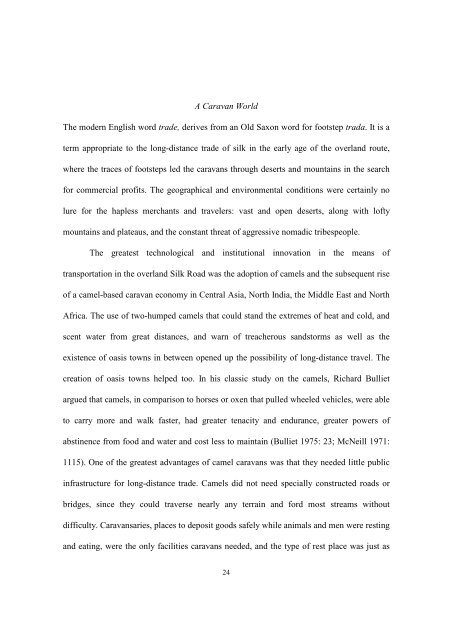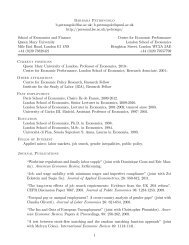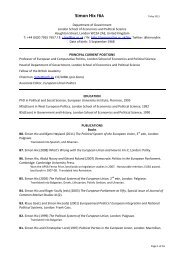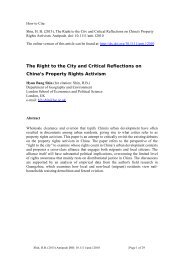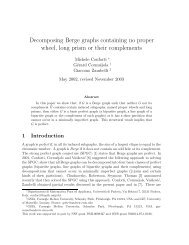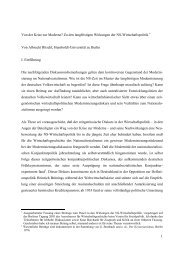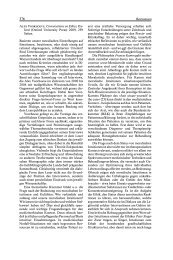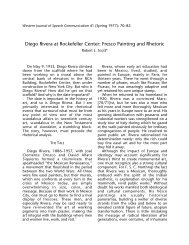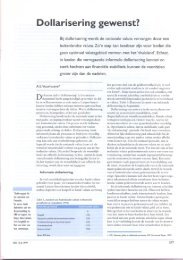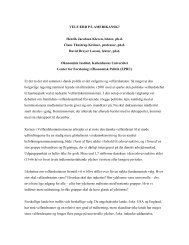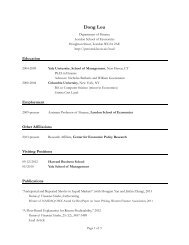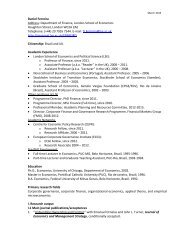Reference: MA, Debin. “The Great Silk Exchange: How the World ...
Reference: MA, Debin. “The Great Silk Exchange: How the World ...
Reference: MA, Debin. “The Great Silk Exchange: How the World ...
Create successful ePaper yourself
Turn your PDF publications into a flip-book with our unique Google optimized e-Paper software.
A Caravan <strong>World</strong><br />
The modern English word trade, derives from an Old Saxon word for footstep trada. It is a<br />
term appropriate to <strong>the</strong> long-distance trade of silk in <strong>the</strong> early age of <strong>the</strong> overland route,<br />
where <strong>the</strong> traces of footsteps led <strong>the</strong> caravans through deserts and mountains in <strong>the</strong> search<br />
for commercial profits. The geographical and environmental conditions were certainly no<br />
lure for <strong>the</strong> hapless merchants and travelers: vast and open deserts, along with lofty<br />
mountains and plateaus, and <strong>the</strong> constant threat of aggressive nomadic tribespeople.<br />
The greatest technological and institutional innovation in <strong>the</strong> means of<br />
transportation in <strong>the</strong> overland <strong>Silk</strong> Road was <strong>the</strong> adoption of camels and <strong>the</strong> subsequent rise<br />
of a camel-based caravan economy in Central Asia, North India, <strong>the</strong> Middle East and North<br />
Africa. The use of two-humped camels that could stand <strong>the</strong> extremes of heat and cold, and<br />
scent water from great distances, and warn of treacherous sandstorms as well as <strong>the</strong><br />
existence of oasis towns in between opened up <strong>the</strong> possibility of long-distance travel. The<br />
creation of oasis towns helped too. In his classic study on <strong>the</strong> camels, Richard Bulliet<br />
argued that camels, in comparison to horses or oxen that pulled wheeled vehicles, were able<br />
to carry more and walk faster, had greater tenacity and endurance, greater powers of<br />
abstinence from food and water and cost less to maintain (Bulliet 1975: 23; McNeill 1971:<br />
1115). One of <strong>the</strong> greatest advantages of camel caravans was that <strong>the</strong>y needed little public<br />
infrastructure for long-distance trade. Camels did not need specially constructed roads or<br />
bridges, since <strong>the</strong>y could traverse nearly any terrain and ford most streams without<br />
difficulty. Caravansaries, places to deposit goods safely while animals and men were resting<br />
and eating, were <strong>the</strong> only facilities caravans needed, and <strong>the</strong> type of rest place was just as<br />
24


